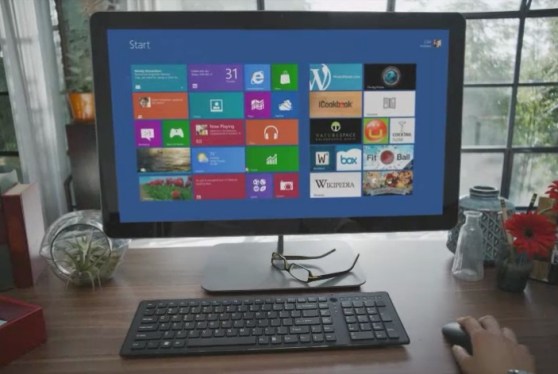
This week is an epic one for tech news.
I’m not talking about Apple. Sure, the iPad Mini that Apple just confirmed is a long-awaited addition to the company’s tablet line, and it’s one that Apple is virtually required to make — assuming it doesn’t want to keep losing market share to smaller, cheaper Android tablets like the Kindle Fire and Nexus 7.
No, the company I’ll be watching most closely this week is Microsoft.
Microsoft will launch Windows 8 and its own iPad competitor, the Surface, at the end of the week. These two products will be the test of whether the company can successfully manage the transition to a new era of computing.
The company has done it several times before, as I explained in a CNBC appearance earlier this week (see below). Microsoft started as a software vendor for hobbyist computers but turned into the dominant operating system provider in the PC era, thanks to a canny deal with IBM to provide MS-DOS for its computers.
Then, just as DOS started to fade, Microsoft managed the transition to a graphical world with a multi-year strategy to shift its customers to Windows in the 1990s.
As computers became increasingly connected to the Internet in the late 1990s, Microsoft’s “embrace and extend” strategy put it in a dominant position among Internet companies, successfully driving Netscape out of business and rocking AOL back on its heels. Of course, there was a small matter of an antitrust suit to deal with, and that arguably kept Microsoft on the sidelines as Google rose to dominance in the Web 2.0 era. (The consent decree Microsoft had to sign with the Department of Justice finally expired in 2011, after 10 years.)
Now the computing world is entering another new chapter. Desktops and notebooks are beginning a long, slow decline, to be replaced by what we now call “tablets” but soon will refer to simply as screens. Some of those screens will be small, some will be large, some will have removable keyboards and some will be mounted on walls as passive displays. Almost none will have permanently-attached keyboards or mice.
In short, voice and touch interfaces will dominate in the new, screen-centric era, and Microsoft knows it needs to make this transition if it wants to remain a dominant force in computing.
So the company is drawing on decades of experience with computing transitions to make this happen. Just as the early versions of Windows were based on DOS and still let you run DOS programs, Windows 8 is based on earlier versions of Windows and will let you run all the Windows programs you already have.
Sure, there’s a new interface to learn, but it’s hardly as radical or as disorienting as critics have made it out to be. With minimal training, even a three-year-old can manage the basics of opening programs, resizing screens, and going back to the Start screen. (I’ve been using Windows 8 at home for several months, on an older IBM Thinkpad, and it’s just fine.) As Joanna Stern wrote on ABC, it does require some willingness to accept change. Microsoft is almost certainly going to be pouring massive resources into educating consumers, via advertising and other means, so this interface won’t remain alien for long.
Still, if you don’t like it, ignore it. Switch over to the classic Windows view and pretend nothing has changed. That’s the genius of Microsoft’s strategy: It lets people put one foot in the tablet world while keeping another foot planted firmly in the past.
As a mentor told me long ago, best not to remove foot from stone until other foot is planted on next stone, Grasshopper.
Still, the Windows 8 transition is a risky strategy, and it is possible Microsoft will blow it. I’m not convinced that many people will actually buy the Surface, despite the rave reviews: I think it’s probably overpriced, and there are still no compelling apps. If history is any guide, it’ll take Microsoft several versions to get the touchscreen right, so it’ll probably be Windows 9 or Windows 10 before we see the full range of what the company is capable of.
Even if it’s not a guaranteed win, though, Windows 8 is Microsoft’s best shot at remaining relevant into the next decade. That’s why I’ll be watching its launch this week, and its reception in the weeks to come, with great interest.

